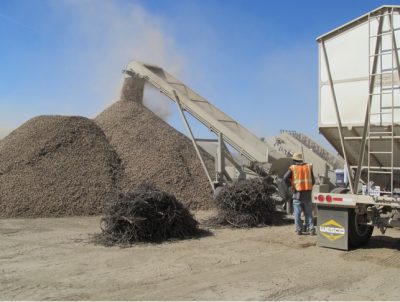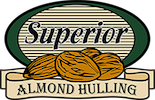Incoming Quality Requirements
It is very important for us to preserve the quality and quantity of the almonds that you deliver to us, and send them on to the buyer as a premium product. The grower’s help is essential in realizing this goal. Criteria for our quality assurance and protection program includes:
Moisture
Excessive moisture in loads delivered from the field can lead to spoilage, mold growth, microbial contamination, and concealed damage which may be classed as “inedible” by USDA graders. Controlling moisture after the nuts are harvested may require drying, either before or after the hulling and shelling process, which comes with drying charges. If drying services are not available, the load may have to be returned to the grower for ranch drying. Shelling wet nuts can also lead to excessive meat breakage or even embed shell particles in the kernels, also an “inedible” condition. Because of these risks, our agreement with the grower asks for deliveries to conform to the following MAXIMUM levels:
Hull Moisture 13%: CDFA feed regulations classify almond hulls with more than 13% moisture as “Damaged Hulls”.
Meat Moisture 6%: Handlers must dry any kernels exceeding 6% in order to prevent moisture related damage.
USDA subtracts any moisture over 5% from the lot weight when almonds are graded.
Foreign Material
Field deliveries of almonds typically include dirt and sticks from the shaking and sweeping operations. Minimizing the content of foreign material will reduce freight charges and increase turnouts, so it is in everyone’s best interest to keep orchards and orchard floors as clean as is practical. Dirt and sticks can cause bridging in trailers, leading to equipment damage during unloading.
Extra labor and equipment is always necessary when this occurs, adding to the product handling expense. Small twigs and orchard shreddings can contaminate the almond hull piles, resulting in significantly reduced feed commodity value.

Other debris that is left on the orchard floors will also be swept up and delivered, and may lead to product contamination. Other debris may include: trash blowing in from roadways, food items discarded by workers, and miscellaneous organic materials subject to decomposition.
Superior Almond’s hulling agreement requires the grower to develop and maintain orchard sanitation policies as a part of their Good Agricultural Practices (GAP’s). This program will hand off food safety responsibility to the Good Manufacturing Practices (GMP’s) employed by the huller, and also by the handler. These programs combined can help to avoid any initial contamination and prevent cross contamination between processing lots.
Insect Damage
Once harvested, field almonds are delivered to the huller and are immediately stockpiled and fumigated (except for organic almonds) to prevent insect damage, or they may be processed first and sent on to the handler, where they are fumigated during storage. Superior Almond Hulling manages the stockpiles and retreats as necessary.
If insect damage has already occurred prior to delivery, the damaged almonds may be subtracted from the grower’s paid weight after USDA grading, so it is important to deliver clean and undamaged almonds at harvest.

Leave A Comment
You must be logged in to post a comment.